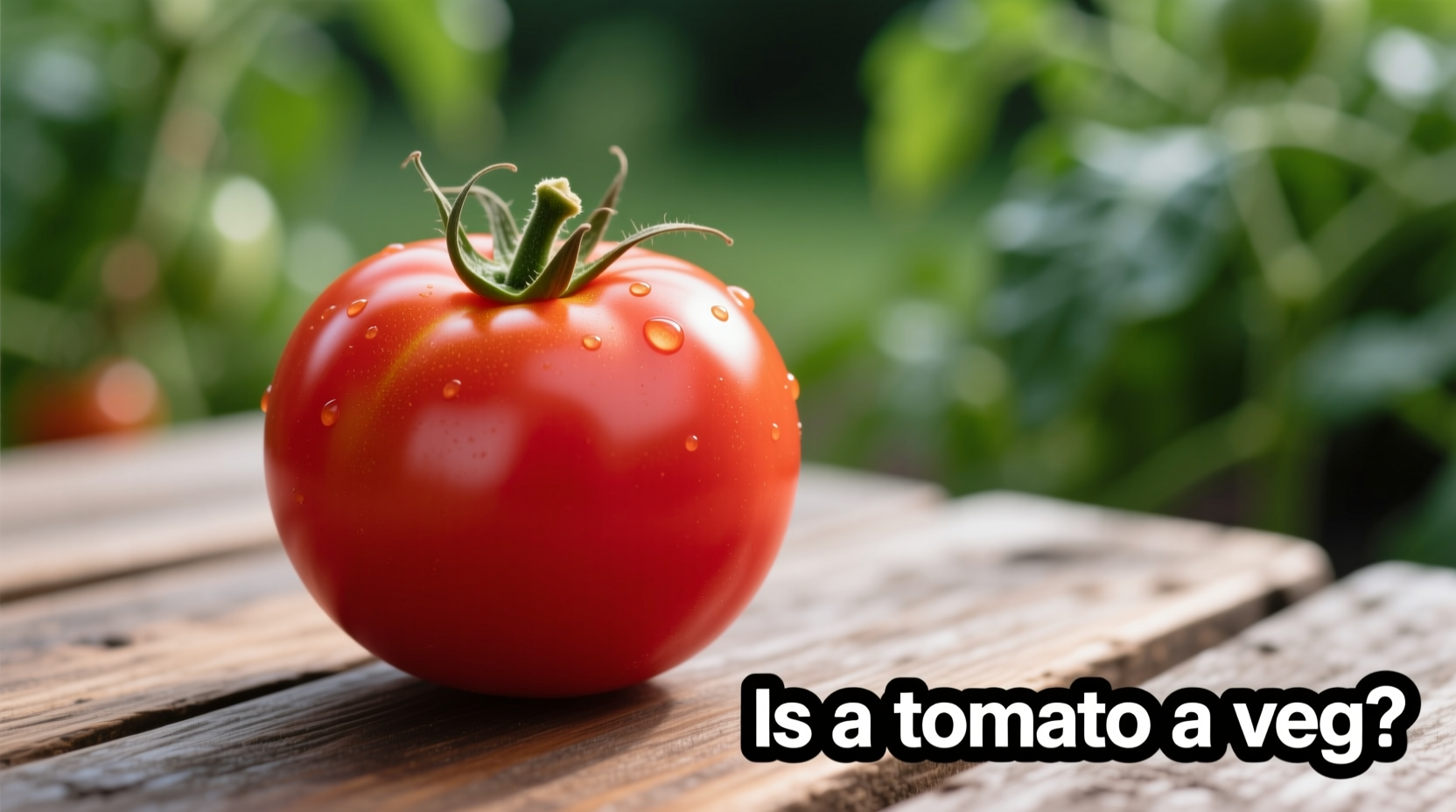Ever wondered why your salad includes tomatoes while dessert features strawberries? The classification of tomatoes sparks debates in kitchens, classrooms, and even courtrooms worldwide. Understanding this distinction isn't just academic—it affects how we cook, garden, and even regulate food. Let's explore why tomatoes occupy this unique culinary crossroads and what it means for your daily meals.
The Scientific Reality: Why Tomatoes Are Botanical Fruits
From a botanical perspective, fruits develop from the ovary of a flowering plant and contain seeds. Tomatoes perfectly fit this definition—they form from the flower of the Solanum lycopersicum plant and house numerous seeds. This places them in the same category as cucumbers, peppers, and eggplants, which many people mistakenly classify as vegetables.
University agricultural extensions consistently confirm this classification. According to the University of Minnesota Extension, "Botanically, fruits are the mature ovary of a flowering plant, usually containing seeds. By this definition, tomatoes, cucumbers, and squash are fruits." This scientific reality remains unchanged regardless of culinary tradition.
| Classification Type | Tomato Status | Key Characteristics |
|---|---|---|
| Botanical | Fruit | Develops from flower ovary, contains seeds |
| Culinary | Vegetable | Savory flavor profile, used in main dishes |
| Legal (US) | Vegetable | Based on 1893 Supreme Court ruling |
| Nutritional | Vegetable | Grouped with vegetables in dietary guidelines |
The Culinary Context: Why Chefs Treat Tomatoes as Vegetables
Chefs and home cooks universally categorize tomatoes as vegetables based on flavor profile and usage. Unlike sweet fruits typically served for dessert, tomatoes offer a savory, acidic profile that complements main dishes. This practical distinction matters more in the kitchen than botanical accuracy.
The USDA's FoodData Central database groups tomatoes with vegetables for nutritional purposes. Their dietary guidelines consistently place tomatoes alongside bell peppers and cucumbers in the vegetable category, reflecting how we actually consume them rather than their biological classification.

Historical Turning Point: The 1893 Supreme Court Decision
The legal classification of tomatoes as vegetables stems from a landmark 1893 US Supreme Court case, Nix v. Hedden (149 U.S. 304). Importers John Nix & Co. argued tomatoes should be classified as fruits to avoid vegetable import tariffs. The court unanimously ruled that while tomatoes are botanically fruits, they're "usually served as, or used at, dinner the same as potatoes or peas, beans, or celery, and not as dessert like oranges, grapes, or prunes."
This decision established that common usage, not scientific classification, determines food categorization in commerce. The ruling remains legally binding today, creating the official vegetable status for tomatoes in American law despite their botanical reality.
When the Classification Actually Matters
Understanding whether tomatoes are fruits or vegetables becomes crucial in specific contexts:
- Gardening practices: As fruiting plants, tomatoes require different care than root or leaf vegetables
- Nutritional planning: While grouped with vegetables, tomatoes provide fruit-like lycopene and vitamin C
- Culinary techniques: Their acidity affects canning safety and flavor pairing
- Legal/commercial situations: Import tariffs and food labeling follow the vegetable classification
For everyday cooking, the distinction rarely matters. As culinary historian Sarah Johnson explains, "Professional kitchens operate on practical usage, not botanical accuracy. We reach for tomatoes when building savory dishes, regardless of their technical classification. The important thing is understanding how ingredients behave in recipes. "
Common Misconceptions Clarified
Several myths persist about tomato classification:
- Myth: Tomatoes were reclassified as vegetables to avoid fruit tariffs Reality: The Supreme Court acknowledged their botanical status while ruling on common usage
- Myth: All "vegetable" fruits are technically berries Reality: Tomatoes are true berries botanically, but not all vegetable-fruits qualify as berries
- Myth: The classification affects nutritional value Reality: Nutritional content remains unchanged regardless of category
Practical Takeaways for Home Cooks
Whether you're meal planning, gardening, or settling a dinner table debate, keep these points in mind:
- Store tomatoes at room temperature away from direct sunlight—they continue ripening after picking
- When canning, always follow tested recipes—their acidity affects safety
- In cooking, treat tomatoes as vegetables for flavor pairing but recognize their fruit-like nutritional benefits
- Don't waste energy arguing with botanists or chefs—they're both right from their perspectives
The tomato's dual identity ultimately enriches our culinary landscape. Embracing both perspectives—scientific and practical—makes us more informed cooks and consumers. As with many food classifications, the reality exists on a spectrum rather than in rigid categories.
Why do people think tomatoes are vegetables if they're technically fruits?
People classify tomatoes as vegetables based on culinary usage rather than botanical science. Tomatoes have a savory flavor profile and are used in main dishes rather than desserts, aligning with how we use other vegetables. This practical kitchen perspective outweighs the scientific definition for most cooks and consumers.
Does the fruit vs vegetable classification affect how I should cook with tomatoes?
The classification doesn't change cooking techniques, but understanding tomatoes' acidity (a fruit characteristic) helps with flavor balancing. Their natural acidity makes them excellent for cutting through rich dishes and affects how they interact with other ingredients in recipes.
Are there other fruits commonly mistaken for vegetables?
Yes, several fruits are culinarily treated as vegetables including cucumbers, bell peppers, eggplants, zucchini, and avocados. Like tomatoes, these all develop from flowering plant ovaries and contain seeds, but their savory flavor profiles lead to vegetable-like usage in cooking.
Does the Supreme Court ruling still affect tomatoes today?
Yes, the 1893 Nix v. Hedden ruling remains legally binding. Tomatoes are still classified as vegetables for tariff, import, and certain regulatory purposes in the United States, despite their botanical classification as fruits. This affects agricultural policies and food labeling requirements.











 浙公网安备
33010002000092号
浙公网安备
33010002000092号 浙B2-20120091-4
浙B2-20120091-4